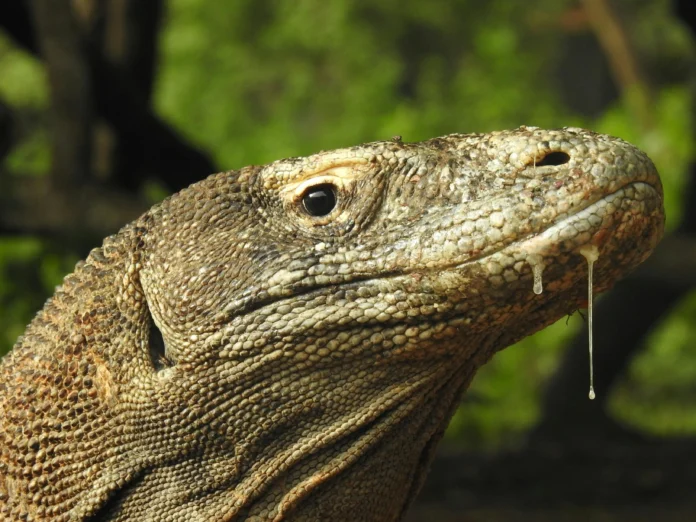Introduction: Embracing the Legend of the Komodo Dragon
Imagine yourself on a sun-drenched island in Indonesia. The atmosphere is peaceful, with only the soft calls of birds and the gentle rustling of leaves breaking the tranquility. Suddenly, you catch a glimpse of mottled scales glistening in the sunlight. A powerful tail sweeps gracefully behind it. There it is—the Komodo dragon, standing majestically still. This creature is a true giant among reptiles, exuding an aura as ancient as time itself.
In this article, we’ll dive into the world of Varanus komodoensis. We’ll explore its biology, natural habitat, conservation efforts, cultural importance, and how it interacts with humans. Get ready to discover fascinating facts, intriguing myths, and essential insights about the Komodo dragon. It’s not just another species; it’s a remarkable testament to the wonders of evolution!
Table of Contents
1. Origins & Taxonomy: A Living Relic of Prehistoric Times
1.1 Taxonomic Family Tree
- Kingdom: Animalia
- Phylum: Chordata
- Class: Reptilia
- Order: Squamata
- Family: Varanidae
- Genus: Varanus
- Species: Varanus komodoensis
Komodo dragons made their scientific debut back in 1912, and their impressive size and fierce nature left the scientific community in awe. They belong to the genus Varanus, which also includes other monitor lizards like the Nile monitor and the lace monitor. Interestingly, the closest relatives of the Komodo dragon are varanid lizards found in Southeast Asia, with habitats in places such as the Philippines and Papua New Guinea.
1.2 Prehistoric Splendor
These magnificent creatures are like time travelers from a long-lost age. Their family tree goes back millions of years, surviving through dramatic climate changes, shifting sea levels, and the earth’s own tectonic movements. Often referred to as “living fossils,” they provide us with a fascinating glimpse into the distant past of our planet.
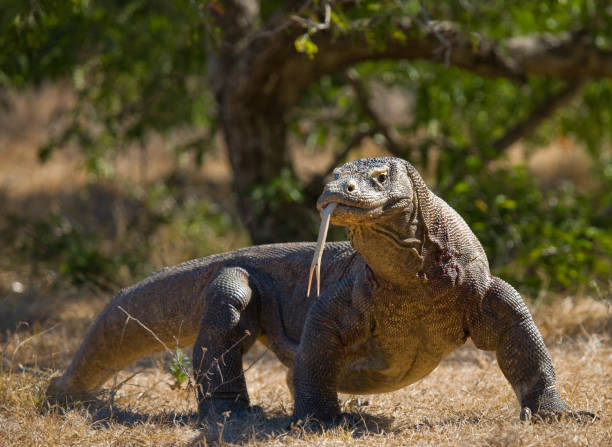
2. Where They Roam: Habitat & Range
2.1 Geographic Range
Komodo dragons are native to five stunning Indonesian islands:
- Komodo
- Rinca
- Flores
- Gili Motang
- Padar
These islands form the heart of Komodo National Park, which was established in 1980 to safeguard its extraordinary ecosystem.
2.2 Island Habitats
Dry Savanna: Picture warm, grassy hills sprinkled with acacia and eucalyptus trees.
Tropical Monsoon Forest: A lush environment that experiences seasonal flooding, providing shade and cool spots to escape the heat.
Beachfront Zones & Mangroves: Crucial habitats for young dragons, these areas offer both shelter and easy access to food.
2.3 Environmental Conditions
Komodo dragons flourish in tropical climates with distinct seasons:
Temperature: Ranges from 30–35 °C (86–95 °F) during the day, cooling off at night.
Rainfall: The wet season runs from mid-December to March, while the rest of the year tends to be quite dry. Their habitats are rugged and remote, perfectly tailored to their ancient and powerful build.
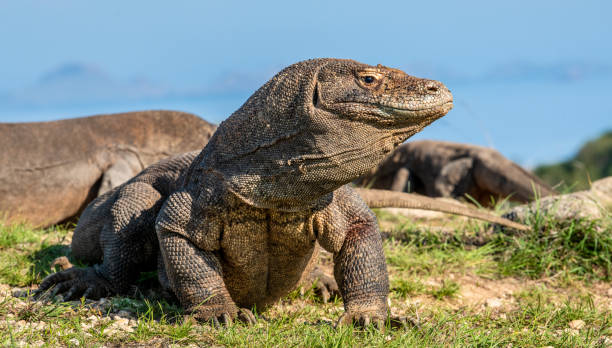
3. Anatomy: Design of a Predator
3.1 Size & Weight
- Males can grow up to 3 meters (10 feet) long and typically weigh between 70 to 90 kilograms (150 to 200 pounds).
- Females are a bit smaller, measuring around 2 to 2.6 meters (6.5 to 8.5 feet) and weighing in at 50 to 70 kilograms (110 to 150 pounds).
3.2 Body Features
- Scaly Armor: Beneath their rough scales, they have osteoderms that offer solid protection.
- Clawed Limbs: These limbs are not just powerful but also agile, essential for digging, climbing, and fighting.
- Long Tail: Their tail is more than half their body length and serves multiple purposes, including defense, swimming, and maintaining balance.
- Sharp Teeth: With 56 to 60 serrated teeth, they are perfectly designed for slicing through flesh.
3.3 Senses & Physiology
- Smell: Tongue “tasting” the air; Jacobson’s organ in the mouth for scent analysis. Can detect rotting meat from several kilometers away.
- Vision: Acute in daylight; less effective at night.
- Hunting Posture: Stay low with your neck raised. This ambush stance helps you surprise your prey.
4. Feeding & Diet: Apex Consumer
4.1 Opportunistic Carnivore
Komodo dragons eat a wide range of things. They hunt deer, wild boar, and water buffalo. They also eat birds, fish, and even invertebrates. They don’t waste any part of their meal, including carrion. They have been known to hunt and kill animals up to three times their own weight.
4.2 Ambush to Feast
They employ stalking, ambush, then sudden attack. Just one bite can do the trick. The venom and bacteria in the saliva can cause the prey to bleed to death slowly. The dragon then locates it using its scent-tracking ability.
4.3 Font of Endurance
Adult dragons can gorge themselves on 50% of their body weight in a single meal and may feast for an hour. Post-meal, they spend weeks resting and digesting.
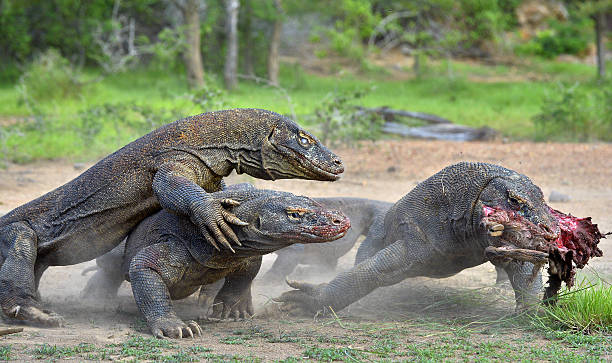
5. Reproduction & Growth
5.1 Mating Behavior
- Season: From July to August.
- Courtship: This involves some interesting behaviors like hissing, circling, and neck wrestling.
- Dominance Display: Males will thrash their necks and let out roars to assert their dominance and scare off competitors.
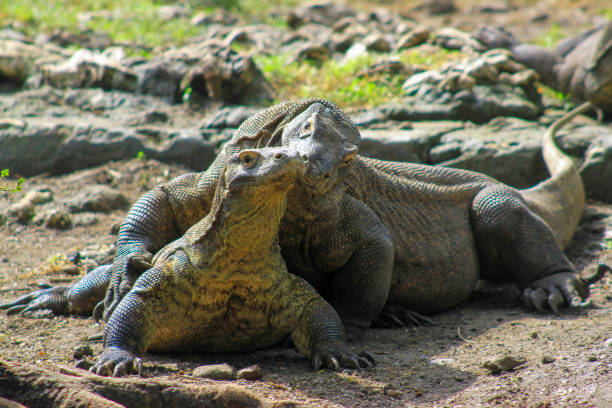
5.2 Nesting
- Egg Count: Typically, a clutch contains between 15 to 30 eggs.
- Nesting Sites: They often choose burrows, areas under root masses, or even old nests from megapode birds.
- Incubation: Takes about 8 months.
- Hatching: Occurs from May to July. The hatchlings are quite independent right from the start and usually stay in the trees for their first 18 months.
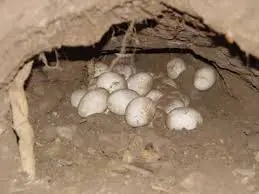
5.3 Growth Rate
- Hatchlings: They measure around 50 cm (20 in) at birth.
- Adult: They reach full maturity in about 7 to 8 years.
- Lifespan: In the wild, they can live up to 30 years, and even longer in captivity.

6. Behavior & Social Structure
6.1 Territorial Nature
Male dragons are known for establishing and fiercely defending their territories. These confrontations can sometimes result in serious injuries or even death. After a fight, the defeated dragon typically retreats. Their bark-like breathing and roar-like hiss serve to intimidate both rivals and potential threats.
6.2 Hierarchy
In the dragon world, dominance plays a crucial role in determining who gets access to food and mates. You’ll often see dragons lining up to feed, with larger ones taking precedence. The smaller dragons tend to hang back, waiting for leftovers or scavenging whatever scraps they can find.
6.3 Daily Rhythms
- Morning: They bask in the sun to warm up their bodies.
- Midday: They seek out shade to escape the heat.
- Evening: This is their prime time for hunting.
- Night: They rest in their shelters, with some activity during twilight hours, especially at dusk and dawn.
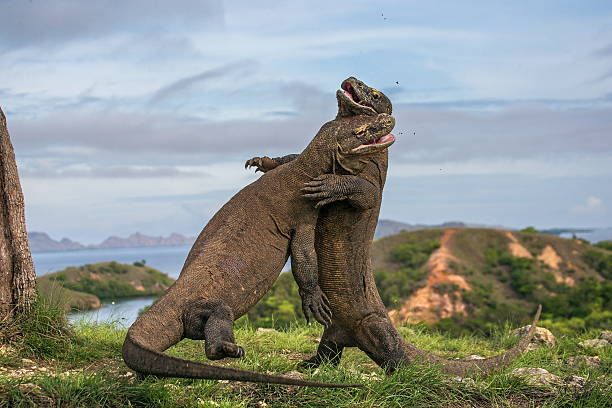
7. Ecological Importance
7.1 Top Predator Role
Komodos are the top dogs of their ecosystem, acting as apex predators. They play a crucial role in managing the populations of deer and buffalo, which helps maintain a balanced habitat. By doing so, they also influence the density of vegetation, the number of insects, and the overall health of the ecosystem.
7.2 Scavengers Too
They also clean up carrion, curbing disease spread among species and ecosystems.
7.3 Indicator Species
Their health is a reflection of the overall state of the ecosystem, including factors like pollution, the availability of prey, and the quality of their habitat. Any changes in their well-being can signal larger environmental issues on the horizon.
8. Dangerous Reputation: Fact vs Fiction
8.1 Venom & Bacteria
For years believed to rely on infected saliva to kill prey—though now known they also inject venom. The venom:
- Contains anticoagulant toxins preventing blood clotting.
- Induces rapid blood loss and shock in victims.
- Delivered via glands behind lower jaws .
8.2 Attacks on Humans
Encounters are rare but dangerous. Fatal incidents have occurred:
- In 2007, a fisherman was attacked on Komodo Island.
- Rangers maintain strict safety measures around nests and trails.
Safety Tips:
- Maintain distance (at least 10–20 m).
- Never approach nests.
- Avoid dawn and dusk excursions unaided.
- Heed ranger instructions—your life depends on it.
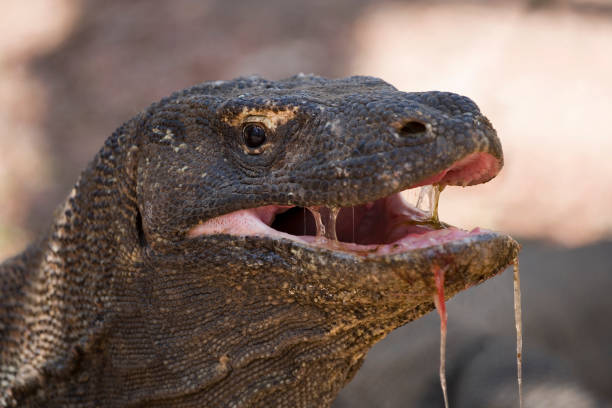
9. Human & Cultural Connections
9.1 Myth & Spiritual Significance
Komodo dragons are woven into local folklore:
- Seen as descendants of ancient dragons.
- Part of traditional dances and masks.
- Symbolize island identity; featured in ceremonies and island emblems.
9.2 Ecotourism
- Every year, the breathtaking sight of Komodo dragons attracts more than 200,000 visitors to the park.
- The perks? It brings in funds for conservation efforts, creates local job opportunities, and fosters global education.
- But there are downsides too: over-tourism can lead to trail erosion and stress for the animals. Thankfully, ongoing efforts are in place to manage visitor numbers and encourage eco-friendly tourism practices.
9.3 Scientific Marvel
Scientists study Komodos for:
- Unique venom biochemistry.
- Role as living links to prehistoric fauna.
- Behavior that supplements understanding of reptile cognition, social interaction, and disease resilience.
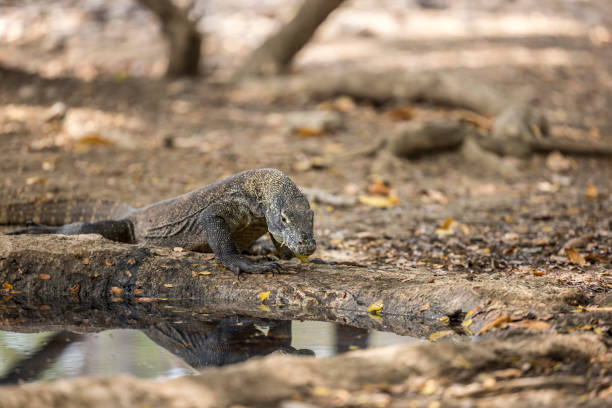
10. Conservation & Threats
10.1 Conservation Status
- IUCN Red List: Vulnerable.
- Population Estimate: Between 3,000 and 5,000 adult individuals.
10.2 Threats
- Habitat loss: Driven by agriculture, wildfires, and tourism.
- Decline in prey: Overhunting of deer and buffalo is putting pressure on their food sources.
- Poaching: Targeted for their skins and as souvenirs.
- Natural disasters: Events like volcanic eruptions and tsunamis can wreak havoc on small islands.
- Climate change: Rising sea levels threaten nesting sites, and shifts in temperature can impact the sex ratios of hatchlings.
10.3 Preservation Efforts
- Komodo National Park: A UNESCO World Heritage site since 1991.
- Anti-poaching patrols: Conservation efforts led by dedicated rangers.
- Community outreach: Educational programs and alternative livelihoods help minimize conflicts between humans and dragons.
- Scientific tracking: Using GPS to monitor movements and territories.
10.4 Success Stories
- There has been a notable decrease in poaching activities.
- Revenue from tourism has supported safaris and ranger operations, but ongoing efforts are crucial for ensuring their long-term survival.
11. Research Advances
11.1 Venom Composition
Scientists found strong peptides that thin blood while feeding. These peptides also reduce inflammation and cause pain. These compounds are being studied for therapeutic applications.
11.2 Genome Sequencing
Draft genome was published in 2013. Key insights include:
- Immune system genes linked to bacterial resilience.
- Evolutionary links to varanid lizards; enabling comparative studies of reptilian development.
11.3 Behavioral Intelligence
They display problem-solving, spatial awareness, and social learning. In captivity, Komodos have solved puzzles. They also show memory and can recognize individuals.
12. Zoos & Captivity
12.1 Global Breeding Efforts
Zoos in London, Saint Louis, San Diego, and even Bali have made great strides in breeding Komodo dragons. This effort helps to:
- – Preserve genetic diversity.
- – Act as educational ambassadors for the species.
- – Alleviate some of the pressure on wild populations.
12.2 Welfare Challenges
For these captive dragons, it’s essential to provide:
- – Spacious, temperature-controlled enclosures.
- – Enrichment activities like logs, meat-based puzzles, and pools.
- – Veterinary care that takes their unique biology into account.
12.3 Reintroduction?
The idea of reintroducing captive dragons back into the wild is a tricky one, both logistically and ecologically. Dragons raised in captivity might struggle with hunting skills, could carry antibiotic-resistant bacteria, or even disrupt fragile ecosystems.
13. Human Encounters: Respect & Responsibility
13.1 Safety around Dragons
- Always stick with trained guides.
- Keep a safe distance when viewing.
- Don’t try to feed or supplement them.
- Never wander into restricted areas—especially nesting sites.
13.2 Responsible Tourism
- Support licensed guides and eco-friendly operators.
- Abide by park rules and show respect for wildlife.
- Minimize your ecological footprint: carry reusable water bottles, avoid littering, and cut down on plastic use.
13.3 Best Times to Visit
- Dry Season (Apr–Nov): Easier hikes and more chances to see dragons.
- Wet Season (Dec–Mar): Thicker vegetation makes hikes tougher, but you’ll encounter fewer crowds.
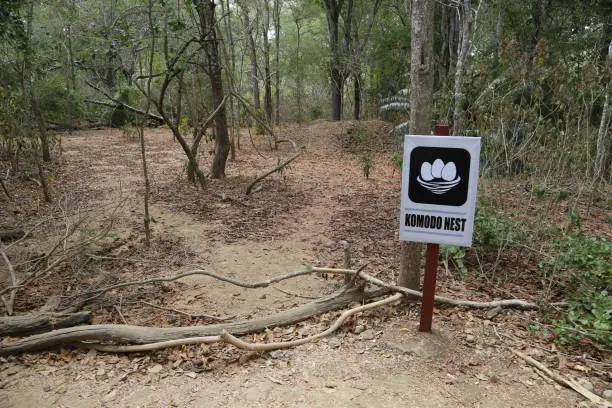
14. How You Can Support & Learn More
- You can help Komodo National Park by making official donations or planning a visit.
- Support research into their fascinating venom and genetics.
- Spread the word—share their incredible story with friends and peers.
- Make sure to pack eco-friendly travel gear and practice responsible tourism.
15. Conclusion: The Last Dragon
The Komodo dragon isn’t just another creature; it truly commands attention. Hailing from the rugged landscapes of Komodo and its neighboring islands, this remarkable reptile embodies ancient power. It stands as a symbol of ecological balance and the wonders of evolution.
As apex predators, these dragons have a significant impact on their surroundings. They serve as fascinating subjects for scientific study, shedding light on adaptive strategies and the resilience of evolution. In the realm of myth, they ignite our imaginations. They represent a delicate yet hopeful future for wildlife and the ecosystems that connect us all.
I hope this article has sparked a deeper appreciation for the Komodo dragon. If you feel inspired, consider contributing to its preservation. You might even embark on a trek to witness its beauty firsthand. After all, not many have the chance to glimpse into the ancient heart of our planet. The dragon is waiting…
Q: Are Komodo dragons venomous or infected with bacteria?
A: Both—they have venomous glands and bacterial-laden saliva. The combination helps them take down prey efficiently .
Q: Can Komodos swim?
A: Yes! They can swim between islands, which explains their distribution.
Q: Do they climb trees?
A: Juveniles often climb to avoid predators; adults remain terrestrial.
Q: Do Komodos kill humans often?
A: Rarely, but when they do, attacks are often fatal.
Q: Can they eat whole buffalo?
A: Almost—they rip off strips with their jaws; the stomach continues to digest the rest over days.

